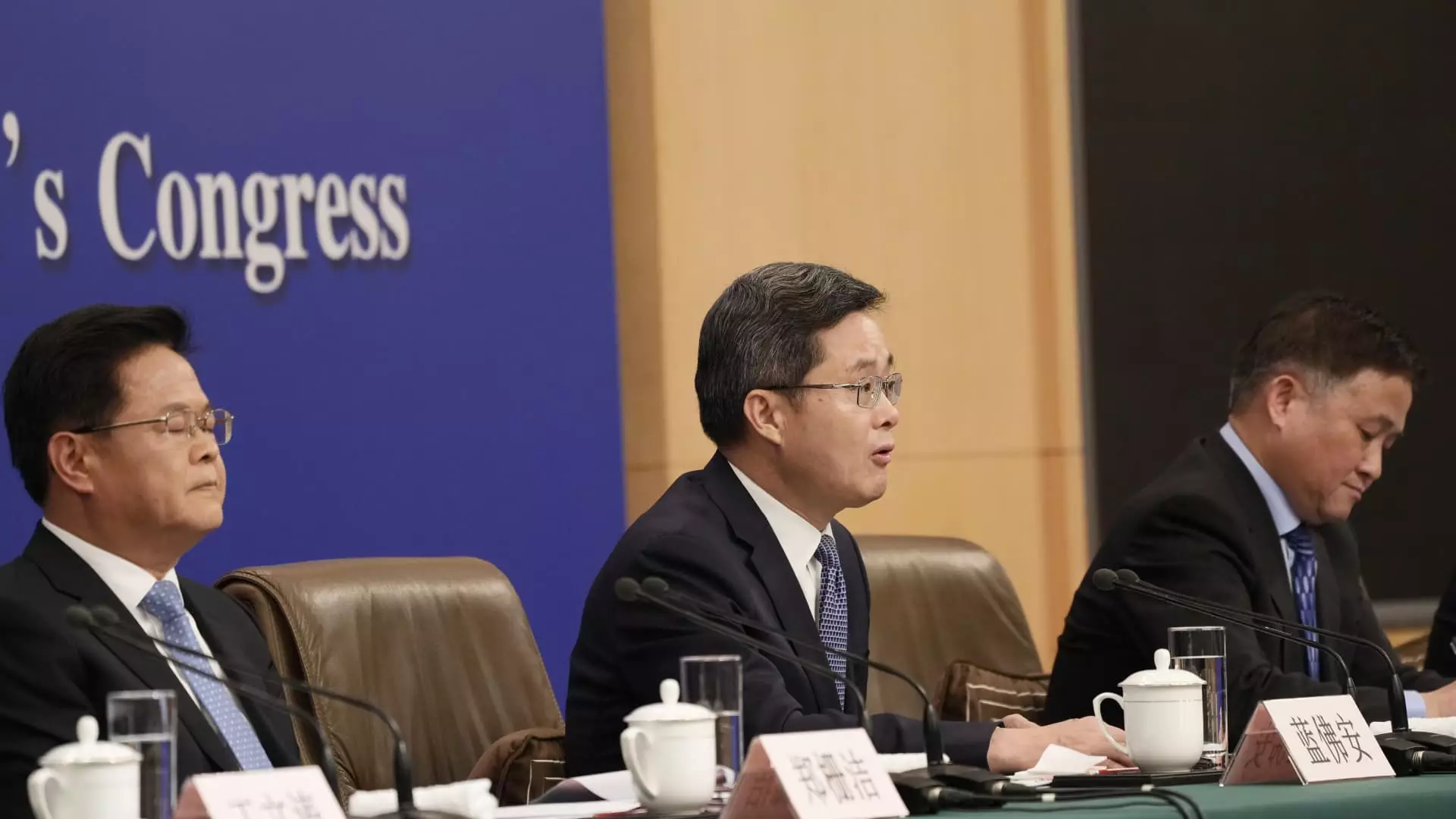As the global economy continues to grapple with challenges both old and new, China finds itself in a precarious situation. Recent statements from Finance Minister Lan Fo’an shed light on the nation’s fiscal policies and its ongoing struggle to stabilize its economic framework. With mounting pressures from local governments facing unprecedented debt risks and a wavering real estate market, the urgency for an economically astute response is palpable. This article will explore the nuances of China’s current fiscal strategy, the implications of potential stimulus measures, and the broader economic trajectory facing the country.
During a critical press briefing, Minister Lan revealed that discussions regarding increasing the national debt and deficit are still nascent. The government has acknowledged the necessity of supporting local governments, addressing debt issues, stabilizing the real estate market, and promoting youth employment as essential components of their policy framework. While these topics are in the evolution phase, the lack of concrete actions draws attention to the delicate balance the government must maintain: encouraging growth while avoiding exacerbating existing financial vulnerabilities.
Economists and analysts alike have indicated that China requires an infusion of fiscal support, a sentiment that has yet to manifest in substantial announcements from Beijing. Despite the recent spate of high-level policy deliberations, specific measures directly aimed at bolstering the economy remain ambiguous. The ongoing discussions seem to indicate a hesitance to commit to robust stimulus packages, further complicating the economic landscape.
The debate surrounding the extent of fiscal stimulus necessary to rejuvenate China’s economy persists, with estimates ranging dramatically— from a conservative 2 trillion yuan to an exorbitant 10 trillion yuan or more. This discrepancy highlights the differing perspectives among economists regarding the urgency and scale of intervention required. Ting Lu, a chief economist at Nomura, cautioned that any largescale stimulus typically necessitates parliamentary approval, a process that may further delay actionable strategies.
The question of how any allocated funds might be utilized is just as critical as the amount of money disbursed. Economic analysts assert that the focus should not solely be on stabilizing local government finances but should also encompass measures aimed at boosting consumer spending. With retail sales languishing and the real estate market continuing its downward trajectory, the broader economy risk being left in limbo if consumption does not increase.
Market Volatility and Economic Indicators
As anticipation builds surrounding the country’s economic performance, particularly in light of the anticipated release of third-quarter GDP data on October 18, market dynamics remain fluid. Following the recent weeklong holiday, market reactions have been tumultuous. After a short-lived stimulus-fueled rally, mainland Chinese stocks reverted to levels reminiscent of late September, signaling investor jitters about the long-term viability of current policies.
China had previously experienced a significant stock market surge when major policy shifts hinted at governmental support for a slowing economy, prompting the CSI 300 index to witness its most substantial weekly gain since 2008. However, as the Federal Reserve commenced its easing cycle, the People’s Bank of China responded with interest rate cuts and the extension of existing real estate support measures. These decisions underscore the interconnectedness of global economic trends and China’s domestic policies and prompt scrutiny of how effectively these interventions can stabilize growth.
The Future of China’s Economic Strategy
While the government has the capacity to act, the critical question remains: Will they leverage this opportunity for a robust fiscal response, or will they remain reticent, leading to more pronounced economic challenges? The commitment issued by the National Development and Reform Commission (NDRC) to expedite the allocation of investment projects suggests a growing recognition of the pressing need for revitalization. Yet, the absence of direct announcements regarding additional stimulus packages raises concerns about the government’s future moves.
As China navigates this fiscal balancing act, it is crucial for policymakers to remain agile and responsive to both internal and external economic pressures. Balancing the competing demands of immediate financial stabilization against long-term growth strategies will define the path forward for China’s economy. Ultimately, how the government chooses to respond to current conditions will have lasting implications for its trajectory in an increasingly uncertain global economic landscape.
As China faces dwindling growth and economic uncertainty, the government’s fiscal strategy will become increasingly vital to ensure stability and growth in the years to come.


Leave a Reply